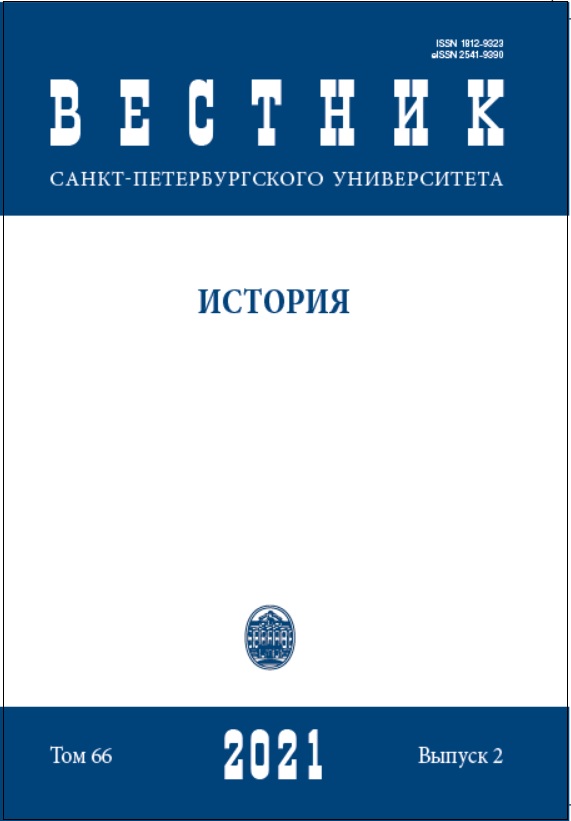From bond power to a medieval state
DOI:
https://doi.org/10.21638/spbu02.2021.208Abstract
We can trace two fundamentally different phases of social development in archaic Scandinavia. Judging by the fact that the long house of frame-and-pillar construction, in which the patrilocial extended family lived, who had been keeping an oðal for generations, appeared in the early Scandinavian Bronze Age around 1800 BC. e. and existed for three millennia, including the so-called «The Viking era», it seems very likely that the traditional Scandinavian society of bonds existed all this time until 1179-1180 in Denmark. A system of oðal has developed; this land is inherited through the male line from generation to generation. Often, three generations of relatives - the head of the oðal with his wife and his adult sons with their wives and children, as well as numerous household members and house slaves - live under the same roof in a long house with central rectangular hearths along the axis. The king has the right to collect a people's militia of bonds, which, under the leadership of its leaders - strong and wealthy bonds - is quite capable of resisting the king’s not large squad and often dictates its conditions to it. The kings were chosen at þings - law-meetings of armed men of districts. The formation of early medieval states - in Denmark - the last quarter of the XII century. The king Valdemar and Adsalon Bishop, after a period of the so-called “civil wars”, relying on professional heavy-armed horse troops, defeat the bond’s militia and disarm the bonds, which were now prescribed only for agriculture work, taxes to the king. From now on, peasants - bonds were prescribed only agricultural work and taxes in favor of the crowns and the church and afterwords duties in favor of the new feudal lords.
Keywords:
óðal, ancient Germans, Scandinavian archeology, traditional structure of society in Scandinavia, Old Scandinavian dwelling, long house, militia, squad, medieval state
Downloads
Downloads
Published
How to Cite
Issue
Section
License
Articles of "Vestnik of Saint Petersburg University. History" are open access distributed under the terms of the License Agreement with Saint Petersburg State University, which permits to the authors unrestricted distribution and self-archiving free of charge.





